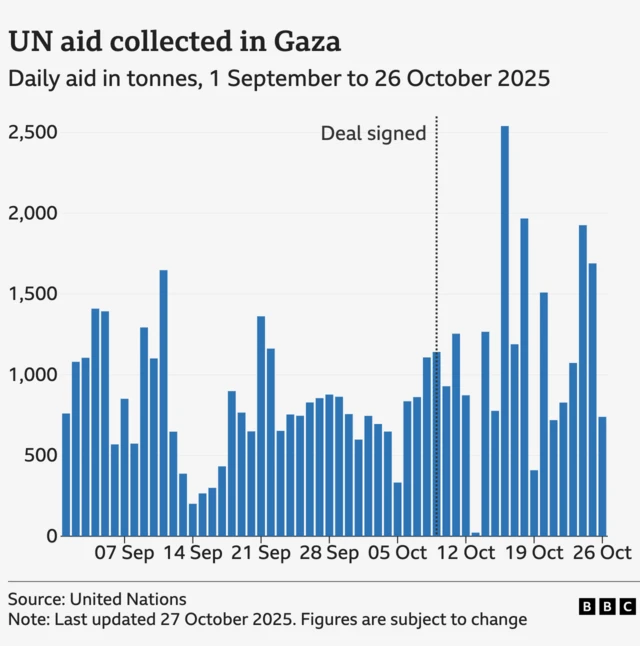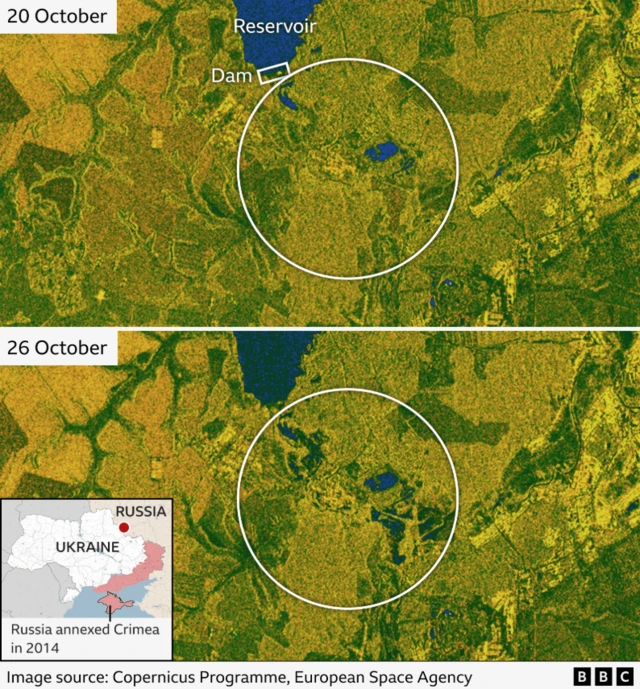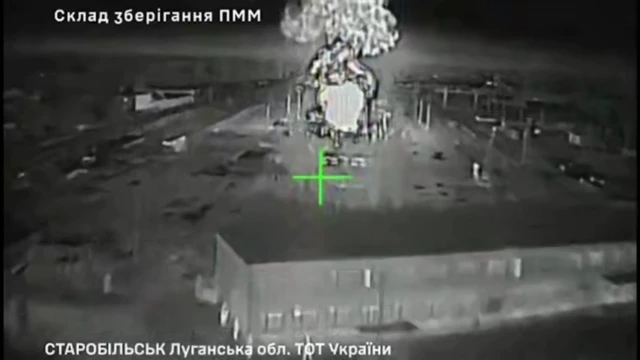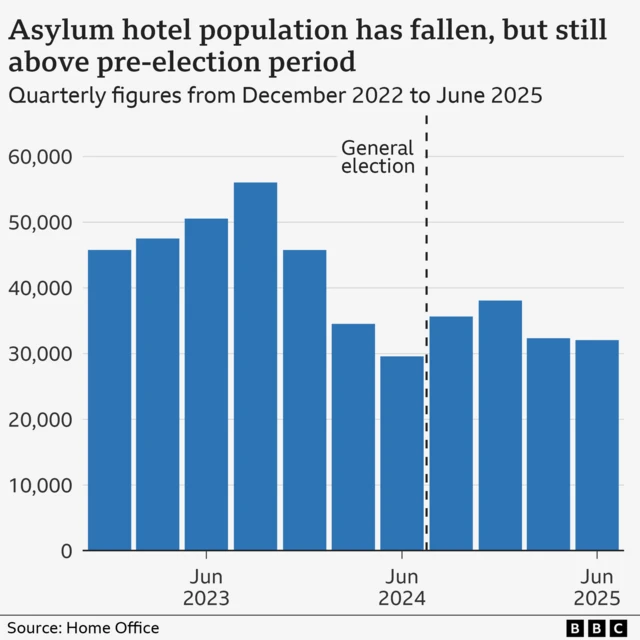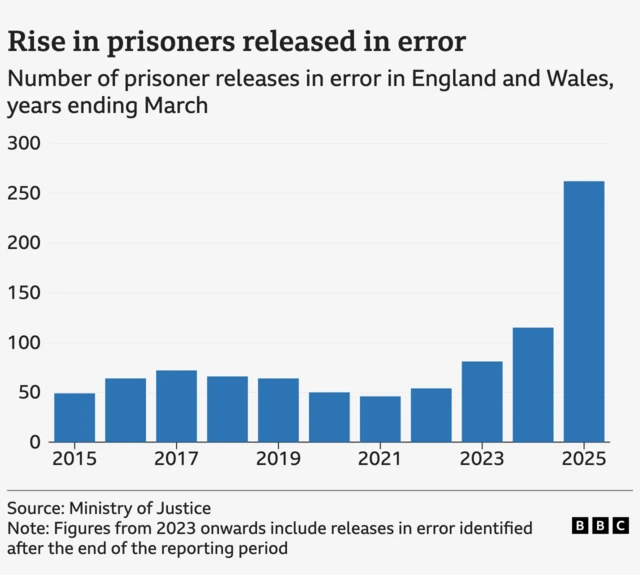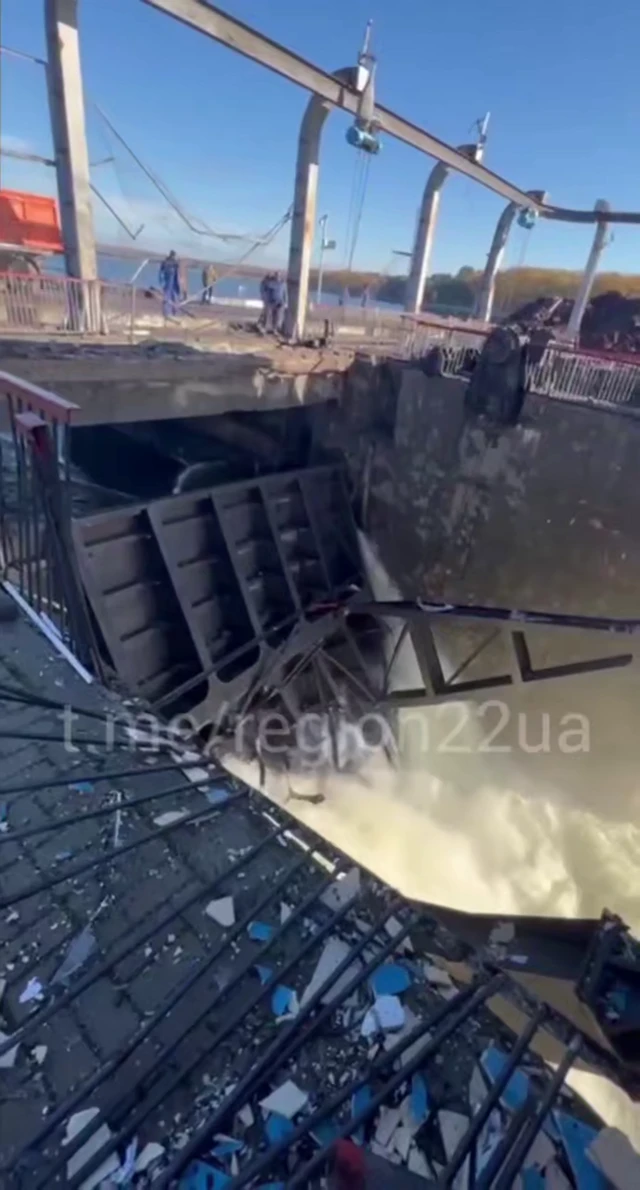Analysing flooding in Russia after dam strikepublished at 17:17 GMT 27 October
 Thomas Copeland
Thomas Copeland
BBC Verify Live journalist
It’s been a varied today for BBC Verify Live, so here’s a quick recap of where our coverage has taken us.
We started by verifying footage showing the aftermath of a Ukrainian strike on a Russian dam over the weekend, later following up with specialist satellite imagery analysis to assess the impact of flooding caused by a breach in it.
After the accidental release of a high-profile sex offender from a British prison on Friday, we showed how the number of prisoners released in error in England and Wales has reached a record high.
Our data team has also been looking at the background of a highly critical report about the UK’s asylum accommodation system, including:
Plus, is this picture AI-generated? Nope, it’s just an optical illusion.
We’ll be back tomorrow morning with more, so please do join us then.




